Trump claims credit for Chicago ‘strike force’ to address gun violence
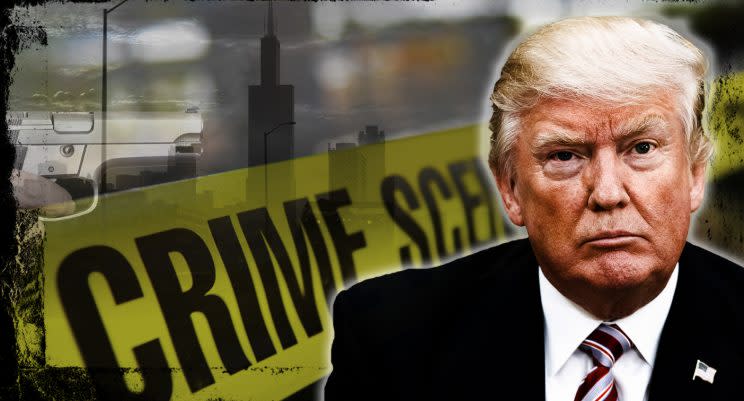
President Trump announced early Friday morning that he was sending federal help to Chicago in an effort to quell the city’s gun violence.
“Crime and killings in Chicago have reached such epidemic proportions that I am sending in Federal help. 1714 shootings in Chicago this year!” he tweeted.
According to Chicago Police Department (CPD) records, there have been 1,360 shooting incidents and 1,703 shooting victims in the city so far in 2017.
The CPD and the Department of Justice’s Bureau of Alcohol, Tobacco, Firearms and Explosives (ATF) announced the launch of the new “Chicago Crime Gun Strike Force” Friday afternoon at a press conference.
“Preventing crime and reducing gun violence won’t be solved by one strategy. It’s about working together as a city, as a state and as a country to focus our efforts on smart and effective solutions,” First Deputy Supt. Kevin Navarro said at CPD headquarters.
The specialized team will include Chicago police officers, Illinois state troopers, federal agents and intelligence analysts, as well as federal and state prosecutors. Their mission will be to stop the illegal gun trafficking in Chicago and bring repeat gun offenders to justice.
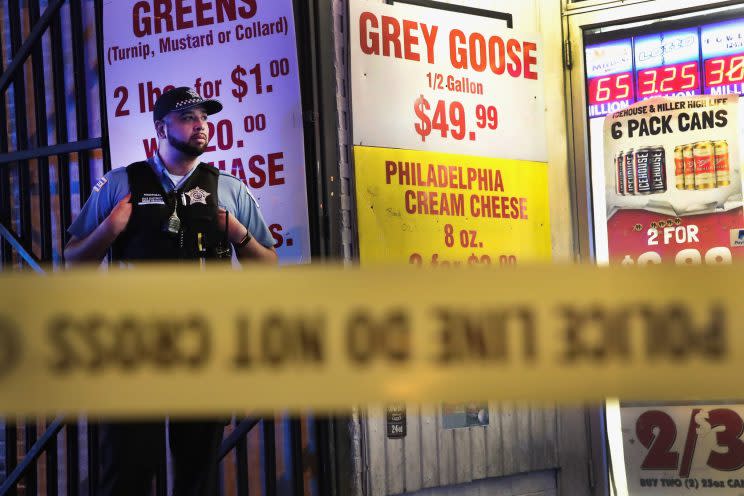
Law enforcement leaders from city, state and federal levels presented the new strike force as a multifaceted, ongoing and collaborative effort — not the effort or idea of one person.
When asked if Trump is “correct in taking credit for these initiatives,” Navarro said that conversations about the new strike force started under former President Barack Obama.
“One thing I can say regarding that is these discussions with the superintendent have gone back to actually November, so we’ve had two administrations that the superintendent has been dealing with in terms of getting extra assistance from ATF,” he said.
CPD credited ATF Special Agent in Charge Celinez Nunez with developing the concept of the strike force after Chicago Police Superintendent Eddie Johnson met with Justice Department officials in Washington, D.C., earlier this year.
Tim Jones, the commander of the newly formed strike force, confirmed that ATF has already taken several steps to move resources and personnel, including 20 ATF agents, to Chicago for this effort: “We are a service-oriented agency and we are excited to help in any way we can.”
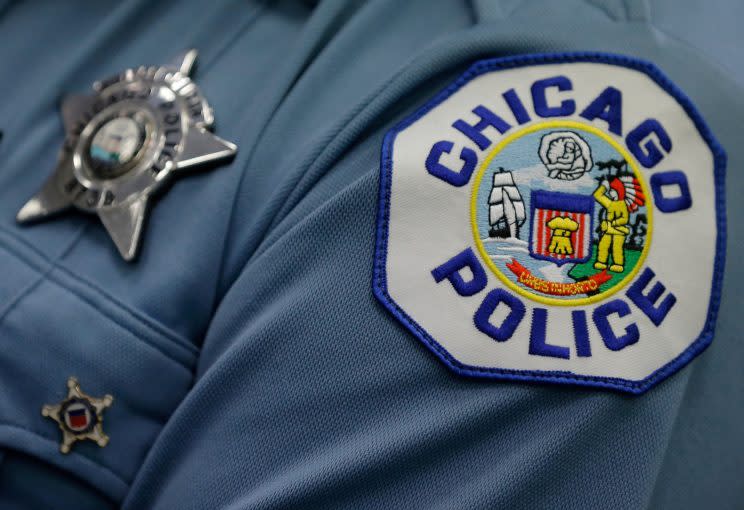
When contacted by Yahoo News, a CPD spokesperson said he could not comment on the accuracy of the president’s claim that he sent federal help to Chicago.
Regardless of his role in the new undertaking, Trump has made Chicago’s gun violence a fixture in his campaign rallies, television interviews and Twitter feed. He would regularly blame the city’s cycles of violence on its strict gun-control laws and what he perceived to be Obama’s ineffectiveness. White House deputy press secretary Sarah Huckabee Sanders said Friday she thinks crime in Chicago is “driven by morality more than anything else.”
Last year was the deadliest in Chicago in nearly two decades. According to data from the CPD, there were 762 murders, 3,550 shooting incidents and 4,331 shooting victims. Police say 2017 has seen 14 percent fewer shootings so far.
Acting U.S. Attorney Joel Levin, speaking at the strike force announcement, said there are two things upon which everyone assembled can agree: Significant progress has been made to stop violence in Chicago, but it still continues at an unacceptable level.
“It is a battle that can only be fought with all hands on deck. That is state, federal and local law enforcement,” he said. “As a representative of federal law enforcement, we very much appreciate the important role that we have in this effort.”

According to Johnson, this is not just a new strategy or tactic, but a foundational change for crime fighting throughout Chicago. He wants to hold accountable “the small subset of individuals and gangs” disproportionally driving violence.
“From the new tech-based nerve centers in police districts which leverage gunshot detection technology, crime cameras and predictive analytics; to stiffer penalties for repeat gun offenders and a new prosecution model for homicides which will create stronger criminal cases; CPD is committed to making every neighborhood in Chicago safer,” Johnson said in a statement.
The law enforcement officials declined to criticize Trump when journalists further questioned whether Trump “deserves credit” for the strike force. But they did repeatedly emphasize that it is a collaborative effort across various levels of law enforcement.
After the press conference, Attorney General Jeff Sessions released a statement praising Trump for “his commitment to enforcing our laws and keeping our communities safe.”
“The Trump administration will not let the bloodshed go on; we cannot accept these levels of violence. That’s why, under President Trump’s strong leadership, we have created the Chicago Gun Strike Force,” Sessions said.
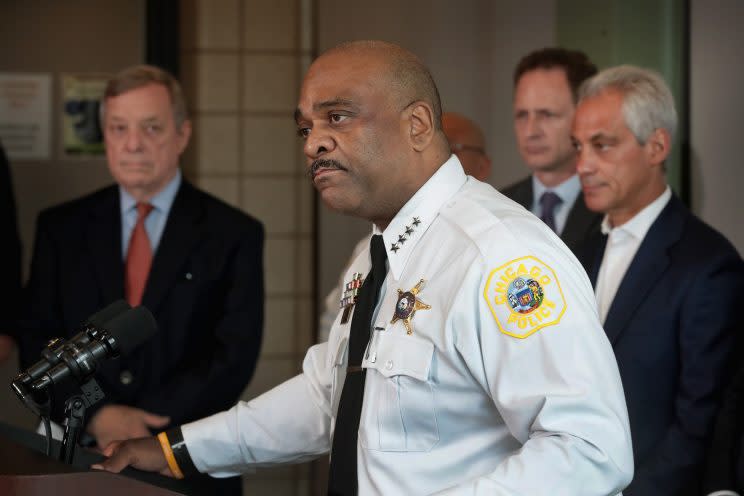
On the campaign trail, Trump promised that he would swiftly stop the street violence throughout the U.S. if elected president.
“Law and order” became a major theme of Trump’s campaign last summer. The killing of five police officers in Dallas was fresh in the nation’s mind when he accepted the Republican Party’s nomination in July 2016.
“I have a message for all of you: the crime and violence that today afflicts our nation will soon, and I mean very soon, come to an end,” Trump told the crowd. “Beginning on January 20th of 2017, safety will be restored.”
At a campaign rally in Charlotte, N.C., on Aug. 18, he vowed: “If I’m elected president this chaos and violence will end and it will end very, very quickly.”
In January, Trump promised on Twitter that he would “send in the Feds” if Chicago couldn’t “fix” the horrible “carnage” plaguing its streets. This was just one of many tweets in which Trump lamented the violence and pushed for law enforcement — either at the local or federal level — to take more decisive actions.
Crime is out of control, and rapidly getting worse. Look what is going on in Chicago and our inner cities. Not good!
— Donald J. Trump (@realDonaldTrump) July 12, 2016
Seven people shot and killed yesterday in Chicago. What is going on there – totally out of control. Chicago needs help!
— Donald J. Trump (@realDonaldTrump) February 24, 2017
Chicago murder rate is record setting – 4,331 shooting victims with 762 murders in 2016. If Mayor can't do it he must ask for Federal help!
— Donald J. Trump (@realDonaldTrump) January 2, 2017
If Chicago doesn't fix the horrible "carnage" going on, 228 shootings in 2017 with 42 killings (up 24% from 2016), I will send in the Feds!
— Donald J. Trump (@realDonaldTrump) January 25, 2017
Dwyane Wade's cousin was just shot and killed walking her baby in Chicago. Just what I have been saying. African-Americans will VOTE TRUMP!
— Donald J. Trump (@realDonaldTrump) August 27, 2016
Brought to you by @HillaryClinton & her campaign- in Chicago, Illinois. #BigLeagueTruth #DrainTheSwamp pic.twitter.com/10iUBOcECp
— Donald J. Trump (@realDonaldTrump) October 20, 2016
The organized group of people, many of them thugs, who shut down our First Amendment rights in Chicago, have totally energized America!
— Donald J. Trump (@realDonaldTrump) March 12, 2016
Obama should work on a ceasefire in Chicago as well as Gaza.
— Donald J. Trump (@realDonaldTrump) July 30, 2014
The most stringent gun laws in the U.S. happen to be in Chicago – and look what is happening there!
— Donald J. Trump (@realDonaldTrump) July 10, 2014
"@Trutt78: @realDonaldTrump – you want to do something nice for Chicago and they shoot you down. Piss on Rahm. He is just an Obama lap dog."
— Donald J. Trump (@realDonaldTrump) June 13, 2014
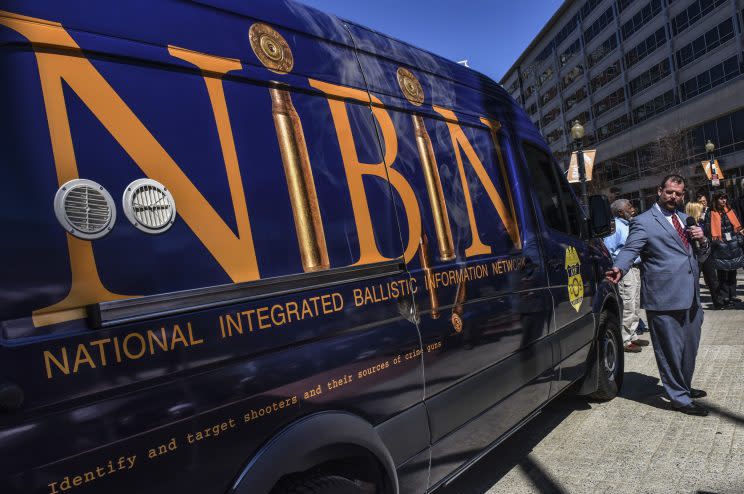
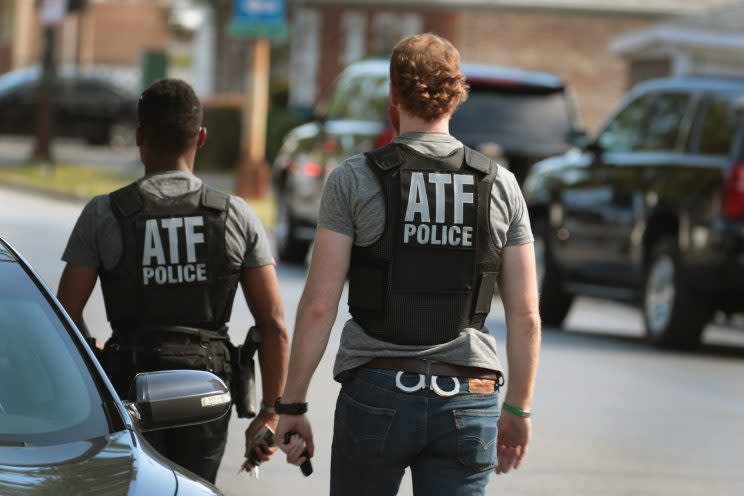
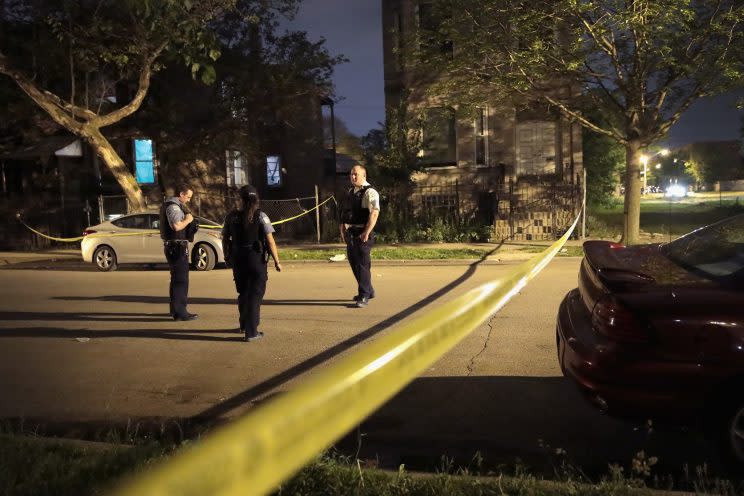
Read more from Yahoo News:
‘Morning Joe’ hosts accuse White House of blackmail over National Enquirer story
Rand Paul aide says Trump ‘fully’ behind senator’s Obamacare repeal plan
Bill to create panel that could remove Trump from office quietly picks up Democratic support
Photos: Demonstrations over reinstatement of President Trump’s travel ban



